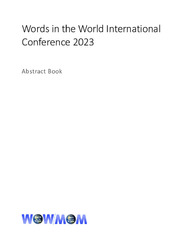| dc.description.abstract | A few studies explored the influence of situational factors on the Emotional valence (EV) and
Arousal (A) of words. Dellatorre et al. (2019) showed that participants were less aroused by
positively valenced words under suspense, while Plahchuelo et al. (2020) recorded lower A
estimates during the COVID-19 lockdown. To test the influence of the COVID-19 pandemic,
we compared the EV and A estimates of Serbian words collected during 2018 (the 1st point)
with the new ratings collected at the beginning of the pandemic in 2020 (the 2nd point) and in
the summer of 2022 (the 3rd point).
In the 1st and 2nd measurements, participants were different groups of psychology students
(N1=40, N2=42; Dage= 19, ~90% women); in the 3rd measurement, participants were
accessed via social networks (N3=100; Mage=41.7±8, 86% women). The number of words
presented to participants varied across three data collection waves (N1=2100, N2=802,
N3=882). For EV, extremes of the bipolar scale represented negative (1) and positive (7)
words. A was rated on a unipolar scale (low extreme represented words low in A).
The EV and A estimates from the 2nd and 3rd waves showed high correlations with those
collected during 2018 (the 1st and 2nd wave correlations: rEV(800)=.93; .90, p<.001;
rA(800)=.76;.70, p<.001). A new finding concerns a relationship between EV and A estimates
usually described via a quadratic or U-function. Such a relationship was recorded in the 1st
wave (r(800)=-.29, p<.001) but not during the 2nd and 3rd waves. The relationship became
nearly linear (r=-.55, p<.001) in the 2nd wave and perfectly linear in the 3rd (r=-.77, p<.001),
indicating that participants became more aroused by negative and less by positive words
(Figure 1). Since the linearity persisted after the pandemic, we hypothesized that people still
feel that situational circumstances are unfavorable, especially considering the Ukrainian
situation that began in the spring of 2022. | sr |

